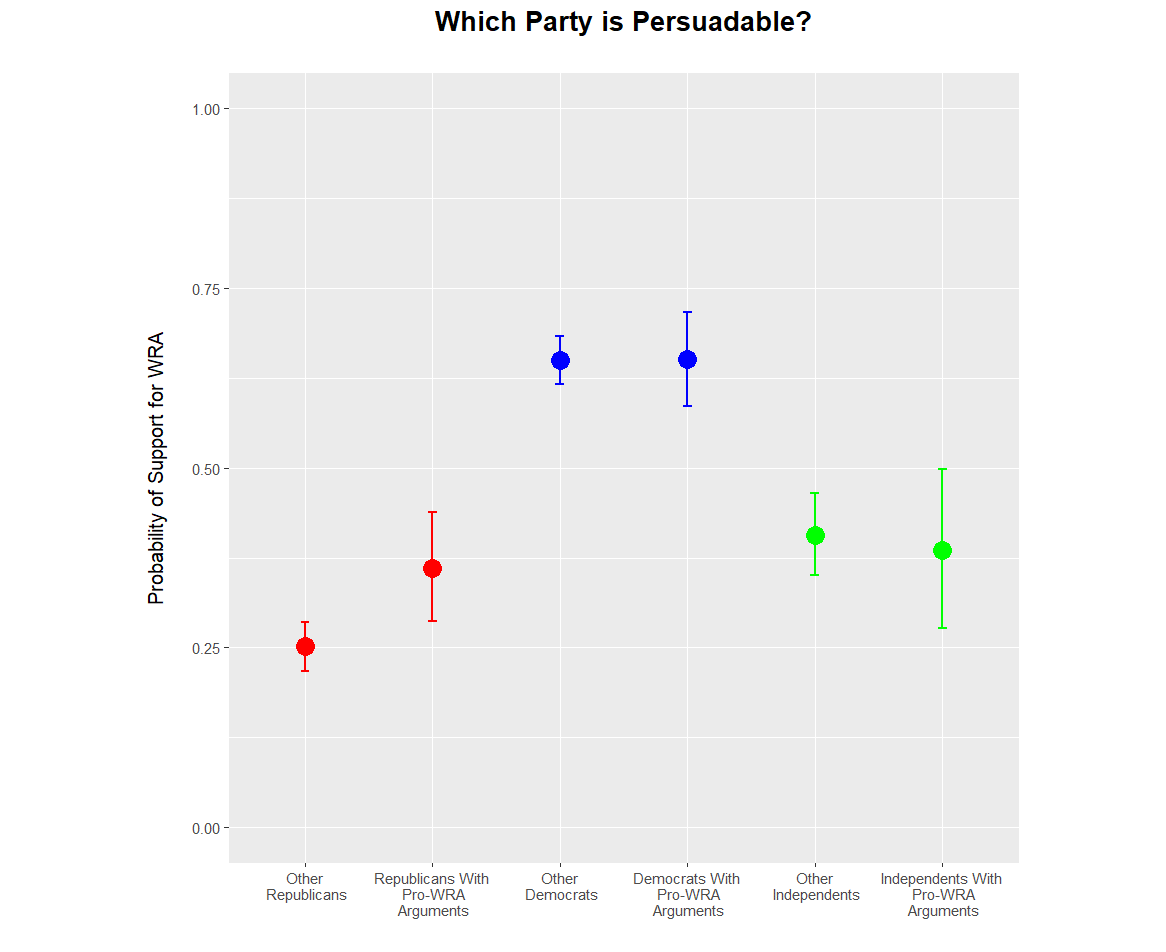
On November 9, 2022, the Illinois Constitutional Amendment 1, also known as the “Workers’ Rights Amendment,” was approved by the majority of the 4.1 million voters who cast a ballot in the election (58.1% to be specific). Constitutional amendments must be approved by Illinois voters through a referendum garnering either half the overall vote (as it was in this case) or 60% of votes cast on a particular question. The amendment adds language to the Illinois constitution to establish the right of employees to organize and bargain collectively through representatives of their choosing for the purpose of negotiating wages, hours, and working conditions, and to protect their economic welfare and safety at work. Moreover, it prohibits Illinois lawmakers from enacting legislation that infringes upon employees’ collective bargaining rights to prevent the implementation of “right-to-work” legislation in Illinois. The amendment's passage was a victory for organized labor, re-elected incumbent Democratic Governor J.B. Pritzker, and Democrats who control the Illinois General Assembly (ILGA).
However, the amendment was not a foregone conclusion or universally supported. In particular, the WRA’s passage also noteworthy because despite Pritzker’s stable (50%) approval rating and the Democrats’ supermajority in the ILGA, a “red wave” had been predicted during the 2022 midterms. Moreover, as recently as 2020 during an otherwise excellent year for Democratic candidates and issues, half of Illinois voters rejected Governor Pritzker and his legislative allies’ “Fair Tax Amendment,” which would have enabled a graduated income tax on the state’s highest earners. Like the Workers’ Rights Amendment (WRA), the Fair Tax Amendment (FTA) was endorsed by organized labor and hundreds of influential advocacy organizations; yet it only garnered 45% support among voters. Considering countervailing political forces, what explains the WRA’s success?
This is a pertinent topic because despite being among the most influential interest groups in American politics, public support for organized labor is tenuous and structured by a range of factors including class conflict, political partisanship, racial attitudes, and media coverage. Finally, many factors structure support for ballot measures including referenda language, endorsements, and voter knowledge. To better understand Illinois voter attitudes toward the Workers’ Rights Amendment and how it passed, we conducted an experimental survey of likely Illinois voters before the 2022 midterms.
The survey measured individual attributes such as partisanship, union membership, education, etc. and exposed voters to referenda language treatments such as arguments for/against and endorsements alongside support, opposition, and ambivalence toward the WRA. Importantly, the sample of people in our survey is representative of the Illinois voting population. To be transparent, we present some of our analysis below. Though we only present a small segment for the sake of reader time, more will be presented in future work from our team.
Beginning with partisanship, Democrats were significantly more likely to support the WRA than Republicans or Independents. Republicans, in contrast, were most likely to oppose the amendment. Both findings are not necessarily surprising. Interestingly, independents were more likely to report that they were undecided on the WRA than the partisans.
Table 1: Attitudes Toward the WRA by Party Affiliation
| Partisanship | Support | Oppose | Undecided |
|---|---|---|---|
| Democrats | 65.7% | 11.0% | 23.3% |
| Republicans | 27.8% | 38.5% | 14.2% |
| Independents | 33.3% | 14.2% | 52.4% |
Interestingly, while Democrats were already favorable towards the amendment, Republicans were somewhat persuadable. Republicans presented with arguments in support of the WRA were significantly more likely to support the amendment than those presented with no arguments. As the plot below illustrates, Republicans (red dots) that were presented with Pro-WRA arguments were 11 percent more likely to support the amendment than other Republicans. There was no such effect for Democrats (blue dots) or Independents (green dots). These findings suggest that the arguments being made by advocates and detractors in advance of the election had at least a partial impact on the attitudes of voters.

Note:The figure above is a predicted probability plot with 90 percent confidence intervals and all control variables held at their mean value.
The survey results also indicated showed that working-class voters, defined as individuals without a bachelor’s degree, were more ambivalent toward the amendment than BA-holders.

Note: The figure above is a predicted probability plot with 90 percent confidence intervals and all control variables held at their mean value.
These results raise a key question: why more working-class voters didn’t enthusiastically support legislation explicitly argued to protect collective bargaining rights. Especially when research from the U of I’s Illinois Economic Policy Institute suggests unionization improves working conditions, salaries, and benefits for Illinois employees? One explanation may come in the form of partisanship. The WRA's success can be partly attributed to its association with the Democratic Party, as Democratic voters overwhelmingly supported it, while Republicans were largely opposed. Presumably, supporters of Amendment 1 and those who re-elected Democrats statewide comprise an overlapping pool of Illinois voters. This suggests Illinois voters identified the “Workers’ Rights Amendment” as a “Democratic-coded” issue and voted accordingly based on their partisan identification.
It wasn’t just Democratic voters who supported the amendment. Democrats in the ILGA were also largely supportive of the WRA, with 73 co-sponsors in the House and Senate compared to only four Republicans. Attitudes from Democratic and Republican Party leaders towards the amendment were also clear. Governor Pritzker campaigned explicitly in support of the WRA, proclaiming, “We need to make union organizing a constitutional right and stop Republican efforts to eliminate collective bargaining.” By contrast, Pritzker’s Republican challenger State Senator Darren Bailey, who opposed the measure in the senate, said of the WRA, “It’s a special interest takeover that has nothing to do with worker’s rights.”
In conclusion, the passage of the Workers' Rights Amendment was a significant victory for organized labor, Democrats, and Governor Pritzker, but it was not without opposition. The passage of the WRA presents a bit of a conundrum with recent results on similar questions in traditionally more Republican states than Illinois. The majority of voters in Florida in 2020 and Nebraska in 2022 approved statewide minimum wage increases via ballot initiatives with support from Republican elites and voters in each state. In light of our findings here, we suggest conservative and independent voters will support pro-worker initiatives; they just might be skeptical of unions as the best conduit for this because of the labor movement’s association with the Democratic Party and they may be more influenced by the arguments presented by advocates and detractors than Democrats.
Further, the passage of the WRA also illustrates the challenges and opportunities for referenda campaigns focused on labor issues, highlighting the importance of voter attitudes toward expanding collective bargaining rights and labor protections through direct democracy. The amendment's success can be partly attributed to its association with the Democratic Party and the impact of arguments related to the amendment, while its challenges highlight the importance of voter attitudes toward expanding collective bargaining rights and labor protections through direct democracy. Our discussion and analysis presented here will be expanded further in the future. So, if this quick dive into some of the data has caught your attention, please keep an eye out for that! Thanks for reading.
______________________________________________________________________________________________________

Magic Wade is an Associate Professor of Political Science and Director of the School of Politics and International Affairs at UIS. Dr. Wade received her PhD from the University of Minnesota and her scholarship on collective bargaining rights, prison-based higher education, urban politics, and gun violence is featured in the Labor Studies Journal, Journal of Prison Education and Reentry, Journal of Race, Ethnicity and Politics, and (forthcoming) Homicide Studies.

Nicholas Waterbury is a political scientist and Assistant Research Director for the Center for State Policy and Leadership at the University of Illinois Springfield. He obtained his Ph.D. in political science from Washington University in St. Louis in 2022. Previously he earned an A.M. from WUSTL and a B.A. in political science from Michigan State University.

AJ Simmons is the Research Director of the Center for State Policy and Leadership at UIS. He holds a PhD from the School of Politics and Global Studies at Arizona State University.


